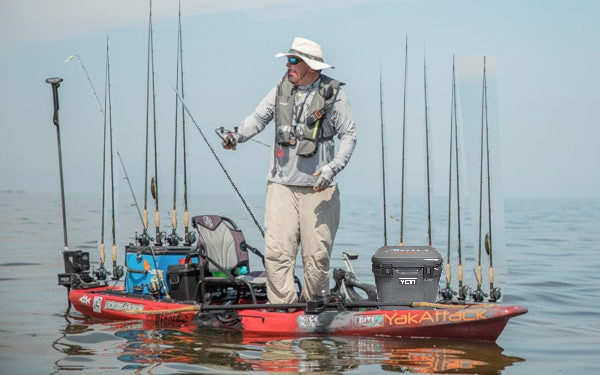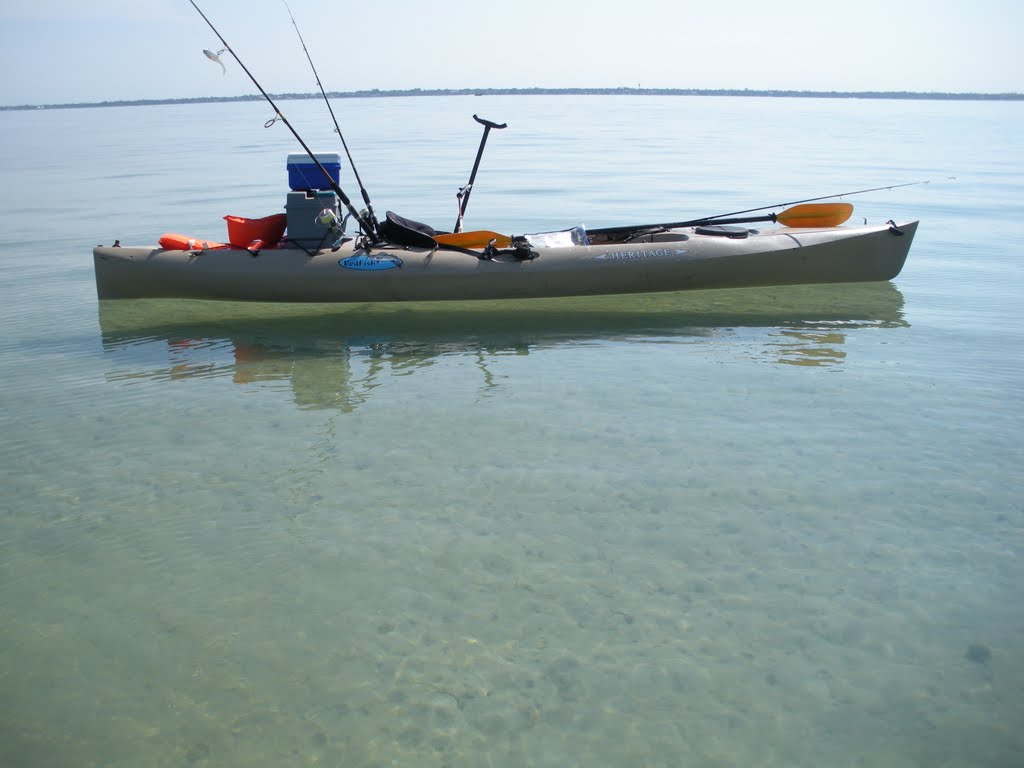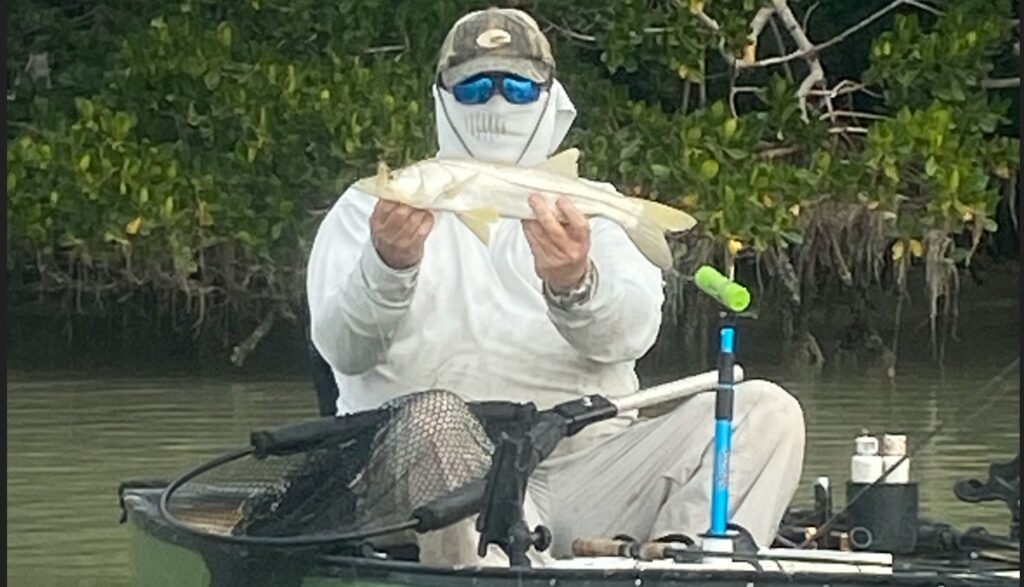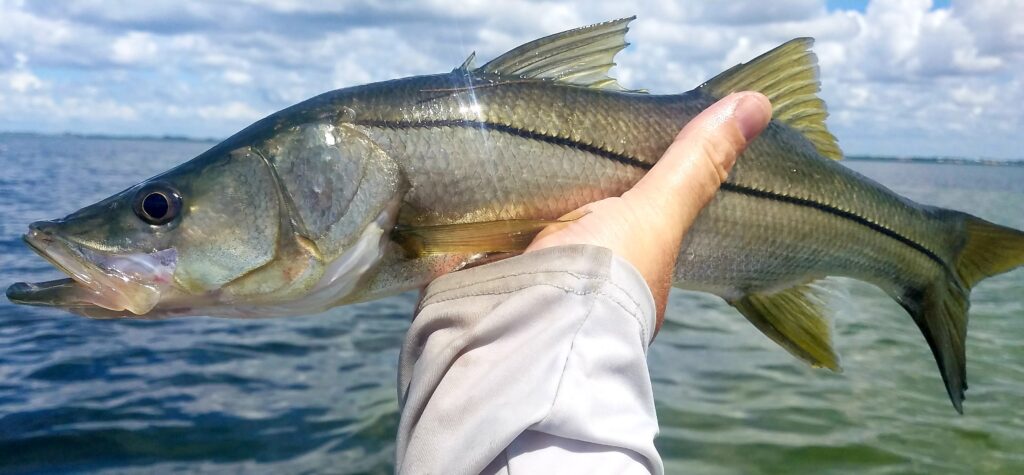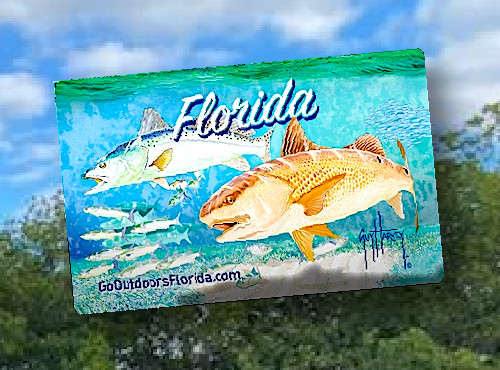Sciaenops ocellatus, commonly known as the Red Drum or Redfish
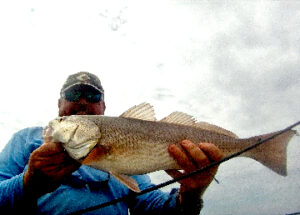
Redfish, also known as red drum, are one of the most sought-after game fish in the United States. These powerful and elusive fish can be found along the Gulf Coast and the Eastern Seaboard, providing anglers with an exciting challenge. With an estimated economic value of over $2 billion annually and a record-breaking catch weighing in at over 94 pounds, it’s no wonder that redfish fishing is a favorite pastime for many anglers. In this article, we’ll dive into the world of redfish fishing, exploring the habitat, behavior, and techniques used to catch these iconic fish.
Redfish Life Cycle
Egg Stage
The life cycle of the Red Drum begins with the fertilization of eggs, which takes place in the open waters of the ocean. The eggs are pelagic and float on the surface of the water.
Larval Stage
After hatching, the larvae of Sciaenops ocellatus spend their first few weeks drifting with ocean currents. During this stage, Red Drum larvae are mainly herbivorous and feed on planktonic algae and small crustaceans such as copepods.
Juvenile Stage
As the larvae grow and develop, they begin to settle in shallow coastal waters, such as estuaries and tidal creeks. As juveniles grow, they become more predatory and begin to feed on small fish, shrimp, and other crustaceans. They are also known to feed on crabs, worms, and small mollusks.
Adult Stage
The Red Drum reaches sexual maturity at around 3-4 years of age, and they can live up to 60 years. During the adult stage, they migrate to deeper waters, where they feed on larger fish, squid, and shrimp. They also spawn during this stage, with females releasing their eggs into the water column, and males fertilizing them. As Red Drum reach adulthood, their diet shifts to larger prey items such as menhaden, mullet, and pinfish. They also feed on squid, shrimp, and other cephalopods.
Overall, the life cycle of Sciaenops ocellatus is characterized by a gradual transition from pelagic to benthic environments, and from planktonic to larger prey items. Their life cycle is influenced by factors such as water temperature, salinity, and prey availability.
Redfish are known to prefer warmer waters for spawning and development of their larvae. In the Gulf of Mexico, redfish spawning occurs in nearshore waters between mid-August to mid-October, with temperatures between 68-86°F. In contrast, on the Atlantic coast, spawning occurs during the winter months between 59-68°F.
Salinity is also an important factor for redfish, as they are known to tolerate a wide range of salinities. Juvenile redfish are often found in estuarine environments where there are fluctuations in salinity levels. However, adult redfish are typically found in more stable, higher salinity environments like seagrass beds, oyster reefs, or offshore reefs.
Prey availability is also an important factor for redfish, as they are opportunistic feeders. In the nursery areas, juvenile redfish will feed on small crustaceans and fish, while adult redfish will feed on a variety of prey including crabs, shrimp, and fish. In areas where prey is abundant, redfish may grow more quickly, which can result in higher survival rates.
Redfish fisheries can vary significantly. In South West Florida, there is a thriving offshore fishery that targets large, mature redfish on artificial reefs and live bottom areas. However, the inshore fishery in this area is equally popular, with anglers using live bait, artificial lures, and fly-fishing techniques to catch redfish in the shallow waters of the back bays and estuaries.
In contrast, the East Coast Florida fishery mainly focuses on the inshore and nearshore waters using similar techniques. Louisiana has a well-established fishery that targets both juvenile and adult redfish in coastal marshes and nearshore waters, while the Georgia/Carolinas fishery concentrates on adult redfish in nearshore and offshore waters using artificial lures and live bait.
Redfish Spawning
Sciaenops ocellatus, or Red Drum, are known to spawn in offshore waters during late summer and early fall, typically from August to October. The recruitment of Red Drum into the spawning stock can be influenced by a variety of environmental factors, such as water temperature, salinity, and food availability.
Redfish (Sciaenops ocellatus) generally become sexually mature at 2-5 years of age, depending on factors such as water temperature, food availability, and population density. In general, male redfish mature earlier than females.
According to the Louisiana Department of Wildlife and Fisheries, female redfish are typically mature at a length of 24-28 inches (61-71 cm) and 3-4 years of age, while male redfish are mature at a length of 18-27 inches (46-69 cm) and 2-4 years of age. However, it’s worth noting that maturity can vary depending on the specific population and environmental conditions.
As and example, according the Florida Fish and Wildlife Conservation Commission, female redfish (Sciaenops ocellatus) in Florida typically become sexually mature at 27-32 inches (68-81 cm) in total length and 3-5 years of age, while male redfish typically become mature at 23-27 inches (58-68 cm) in total length and 2-4 years of age. Again, these are general guidelines, and maturity can vary based on a variety of factors such as water temperature and food availability.
Red Drum are known to migrate to offshore waters during the spawning season, where they form large aggregations of individuals. The exact mechanisms that govern the recruitment of Red Drum into these spawning aggregations are not well understood, but several factors are believed to play a role:
1. Environmental Cues: Red Drum are believed to use environmental cues, such as changes in water temperature and salinity, to detect the onset of the spawning season. These cues may trigger the migration of Red Drum towards offshore waters, where they join spawning aggregations.
2. Social Interactions: Red Drum are known to exhibit complex social behaviors, and these interactions may play a role in the recruitment of individuals into spawning aggregations. For example, individuals may be attracted to spawning aggregations through visual or olfactory cues from other Red Drum.
3. Food Availability: The availability of food resources may also play a role in the recruitment of Red Drum into spawning aggregations. Studies have shown that Red Drum tend to aggregate in areas where food resources are abundant, suggesting that food availability may influence the formation of spawning aggregations.
Once Red Drum have joined a spawning aggregation, they engage in courtship behaviors and release their gametes into the water column. The fertilized eggs then develop into larvae, which are carried by ocean currents to coastal waters where they settle and grow into juveniles.
Targeting Redfish
Redfish are a highly sought-after game fish, prized for their fighting ability and delicious flesh. Anglers use a variety of techniques to target these fish, depending on the factors that influence their feeding behavior. Factors such as water temperature, salinity, and prey availability can all play a role in where and how redfish are caught.
Redfish are opportunistic feeders and may consume a variety of other fish and are known for their ability to detect and capture prey in a variety of ways. They have an acute sense of smell and use their lateral line system to detect vibrations in the water, which helps them locate prey. Red Drum also use their strong jaws and sharp teeth to capture and consume their prey.
In areas like South West Florida, where large, mature redfish are caught offshore on artificial reefs and live bottom areas, anglers may use techniques such as trolling with deep-diving lures or fishing with live bait on the bottom. These fish are typically feeding on larger prey, such as crabs, shrimp, and small fish, so using baits that mimic these prey items can be effective.
In contrast, the inshore fishery in South West Florida focuses on catching redfish in the shallower waters using a variety of techniques including live bait, artificial lures, and fly fishing. In this fishery, anglers may target areas such as grass flats, mangrove shorelines, and oyster bars, where redfish feed on smaller prey such as shrimp, crabs, and baitfish. Anglers may use techniques such as sight casting or working the edges of structure with topwater plugs or soft plastics.
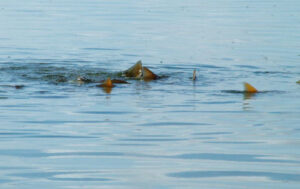
On the East Coast of Florida, where the fishery focuses on catching redfish in the inshore and nearshore waters, anglers may use similar techniques to those used in South West Florida’s inshore fishery. However, they may also use specialized techniques such as jigging or using popping corks to target fish in deeper water. The key in these fisheries is to locate areas where redfish are feeding, such as drop-offs, channels, or near bait schools.
In Louisiana, where redfish are targeted in coastal marshes and nearshore waters, anglers may use techniques such as fishing with live or cut bait along the edges of channels or near structure, or using topwater plugs in shallow areas. Juvenile redfish are often targeted in these fisheries, as they are abundant in the marshes.
Finally, in the Georgia/Carolinas fishery, anglers target adult redfish in nearshore and offshore waters using a variety of techniques including fishing with live bait, trolling with lures, or casting artificial lures such as spoons or jigs. These fish may be feeding on a variety of prey items, including squid, shrimp, or baitfish, so anglers may need to experiment with different techniques to find what works best.
Find those Tails!
Redfish “tailing” is a behavior exhibited by these fish that is unique and exciting to observe. Tailing occurs when redfish are feeding in shallow water, typically on the flats during low tide. During this behavior, redfish tilt their heads down towards the bottom, exposing their tails above the surface of the water. This is done in order to search for food such as crabs, shrimp, and small baitfish that are hiding in the grass and mud. Anglers can spot tailing redfish by looking for the tell-tale sign of a tail sticking out of the water, usually accompanied by a slight ripple. Once spotted, anglers can present their bait or lure in front of the tailing fish and hopefully entice a strike.
Approaching tailing redfish can be tricky, as they are often easily spooked. A good tactic is to approach slowly and quietly from behind or the side, keeping a low profile and avoiding sudden movements. It’s important to stay out of the fish’s direct line of sight to avoid being detected. When casting, try to land the bait or lure in front of the fish and allow it to sink or drift naturally. If the fish spooks, wait a few minutes for it to settle down before making another cast. It’s also helpful to use lighter tackle and a longer rod to make more accurate and delicate presentations. With patience and skill, anglers can successfully target tailing redfish and experience the thrill of sight fishing.
Redfish Mortality Rates from Fishing
Catch-and-release fishing is often used as a way to promote conservation and sustainable management of fish populations. However, even when fish are released after being caught, they may still experience mortality. Mortality rates from catch-and-release fishing can vary depending on a variety of factors, such as water temperature, hook type, and handling practices.
Several studies have investigated mortality rates from catch-and-release fishing for Red Drum, or Sciaenops ocellatus. For example, one study found that mortality rates for Red Drum caught and released in the Gulf of Mexico ranged from 2% to 9%, depending on hook type and water temperature (Kerstetter and Graves 2006). Another study found that mortality rates for Red Drum caught and released in estuarine environments were lower, ranging from 0.4% to 4.4% (Porter and DePersenaire 2019).
Mortality rates from catch-and-release fishing can also depend on the handling practices of anglers. For example, studies have shown that using barbless hooks, avoiding deep hooking, and minimizing air exposure can all reduce mortality rates (Cooke and Suski 2005; Allen et al. 2019).
Overall, mortality rates from catch-and-release fishing can vary depending on a variety of factors, and may range from relatively low to relatively high. Anglers can reduce mortality rates by using appropriate handling practices and by being aware of factors that can influence mortality.
Generally recommended that anglers minimize the time that a redfish is out of the water as much as possible. A good rule of thumb is to aim for no more than 30 seconds of air exposure for a redfish before releasing it back into the water. It is important to handle the fish gently and keep it in the water as much as possible to minimize the risk of harm to the fish.
Tip: Hold your breath while you handle the fish out of the water. If you need to take a gulp so does she.
Successful Catch and Releases
Successfully catching and releasing Red Drum can be a great way to promote sustainable fishing practices and protect the population of this important species. Here are some best practices to increase the chances of survival for Red Drum that are caught and released:
Use appropriate gear: Use appropriate tackle and gear for the size of the fish you are targeting. Using gear that is too heavy or too light can increase the chances of injury or exhaustion.
Use barbless hooks: Barbless hooks can help reduce the likelihood of injury to the fish and make it easier to release the fish quickly.
Convert Treble hooks to single hooks
Minimize air exposure: Keep the redfish in the water as much as possible and minimize the amount of time it spends out of the water. This can help reduce stress and improve the chances of survival.
Use proper handling techniques: Handle the redfish gently and avoid touching the gills or squeezing the fish too tightly. Use wet hands or gloves to avoid removing the protective slime on the fish’s skin.
Tip: Avoid the death grip. Fish bodies are designed to be suspended in water and so are their organs. Holding as fish tightly around its belly can cause serious internal injury.
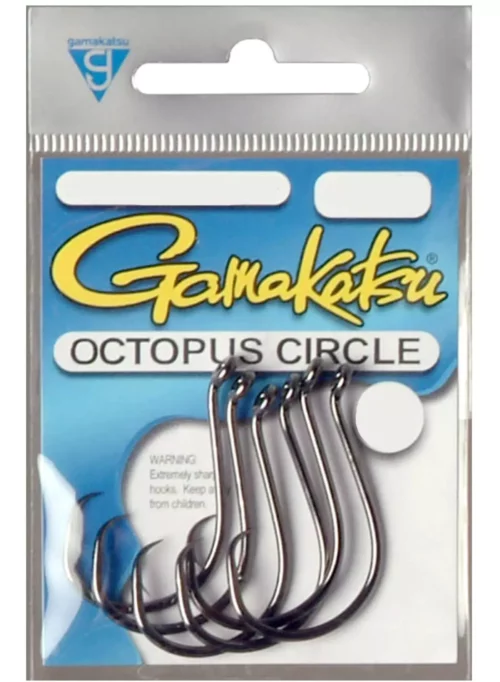
Don’t drop or let the redfish flop around on hard surfaces like the boat deck or ground. Every impact is like a rabbit punch to the kidney.
Avoid deep hooking: Try to set the hook quickly and avoid letting the fish swallow the hook. If the hook is deep in the redfish ‘s mouth, use pliers to carefully remove it without causing further damage. If you can not get to the hook just cut the line as close as possible.
Consider using circle hooks: Circle hooks can be an effective tool for reducing mortality rates from catch-and-release fishing, as they are less likely to cause internal injuries.
Release the fish quickly: Release the fish as quickly as possible once it has been caught. If the fish is exhausted or struggling, revive it in the water before releasing it.
By following these best practices, anglers can increase the chances of survival for Red Drum that are caught and released. It is important to remember that even with these best practices, some mortality may still occur, especially if the fish is already stressed or if water conditions are poor.
Sources:
NMFS. (2022). Fishery Management Plan for the Reef Fish Resources of the Gulf of Mexico. https://www.fisheries.noaa.gov/action/fishery-management-plan-reef-fish-resources-gulf-mexico
Florida Fish and Wildlife Conservation Commission. (n.d.). Red Drum. https://myfwc.com/wildlifehabitats/profiles/saltwater/drum-red/
Texas Parks and Wildlife Department. (n.d.). Red Drum. https://tpwd.texas.gov/fishboat/fish/action/fishfacts.php?id=27
Gulf States Marine Fisheries Commission. (n.d.). FishSmart Red Drum. https://www.fishsmart.org/species/red-drum/
National Oceanic and Atmospheric Administration (NOAA) Fisheries. (n.d.). How to Catch and Release Fish Safely. https://www.fisheries.noaa.gov/national/sustainable-fisheries/how-catch-and-release-fish-safely
Louisiana Department of Wildlife and Fisheries. (n.d.). Red Drum. https://www.wlf.louisiana.gov/page/red-drum
North Carolina Division of Marine Fisheries. (n.d.). Red Drum. https://portal.ncdenr.org/web/mf/red-drum
South Carolina Department of Natural Resources. (n.d.). Red Drum. https://www.dnr.sc.gov/marine/saltwater-fishing/red-drum.html
FishBase. (n.d.). Sciaenops ocellatus (Linnaeus, 1766) Red drum. FishBase. http://www.fishbase.org/summary/453
NOAA Fisheries. (2021). Red Drum (Sciaenops ocellatus). NOAA Fisheries. https://www.fisheries.noaa.gov/species/red-drum
Texas Parks and Wildlife. (n.d.). Red Drum Biology. Texas Parks and Wildlife. https://tpwd.texas.gov/fishboat/fish/didyouknow/coastal/red_drum.phtml
“Red Drum (Sciaenops ocellatus).” NOAA Fisheries, 2021, https://www.fisheries.noaa.gov/species/red-drum.
“Red Drum Biology.” Texas Parks and Wildlife, n.d., https://tpwd.texas.gov/fishboat/fish/didyouknow/coastal/red_drum.phtml.
“Sciaenops ocellatus (Linnaeus, 1766) Red drum.” FishBase, n.d., http://www.fishbase.org/summary/453.
Kerstetter, D. W., and J. E. Graves. “Mortality of red drum in the Gulf of Mexico after catch-and-release angling.” Transactions of the American Fisheries Society, vol. 135, no. 5, 2006, pp. 1269-1277.
Porter, R. T., and A. R. DePersenaire. “Survival of red drum (Sciaenops ocellatus) after catch-and-release angling in estuarine environments.” Fisheries Research, vol. 218, 2019, p. 105329.
Cooke, S. J., and C. D. Suski. “Are circle hooks an effective tool for conserving marine and freshwater recreational catch-and-release fisheries?” Aquatic Conservation: Marine and Freshwater Ecosystems, vol. 15, no. 3, 2005, pp. 299-326.
Allen, M. S., et al. “The influence of hook type, air exposure duration, and water temperature on the physiological status and survival of caught-and-released red drum.” Transactions of the American Fisheries Society, vol. 148, no. 6, 2019, pp. 1171-1181.
– Kronen, J. D., & Johnson, G. D. (1993). Ontogenetic diet shifts and prey selection in nursery-bound red drum, Sciaenops ocellatus. Marine Biology, 117(2), 279-288.
– Moser, M., & Mann, D. A. (2013). Red drum (Sciaenops ocellatus) spawning aggregations: ecology and management. Gulf and Caribbean Research, 25(1), 45-57.

